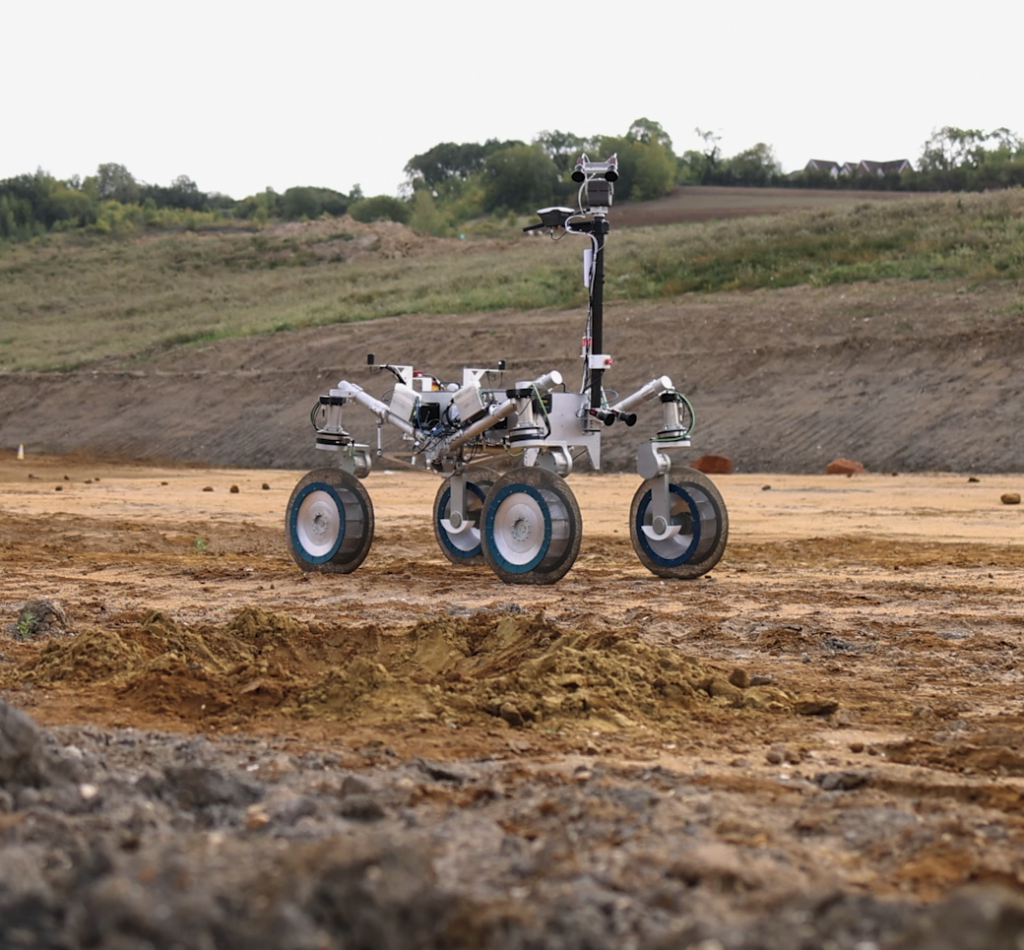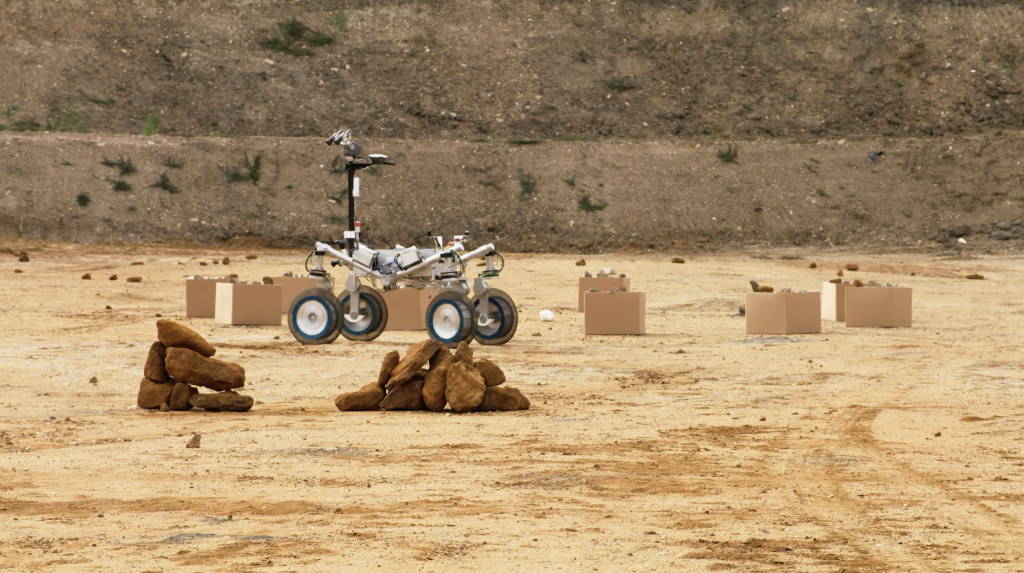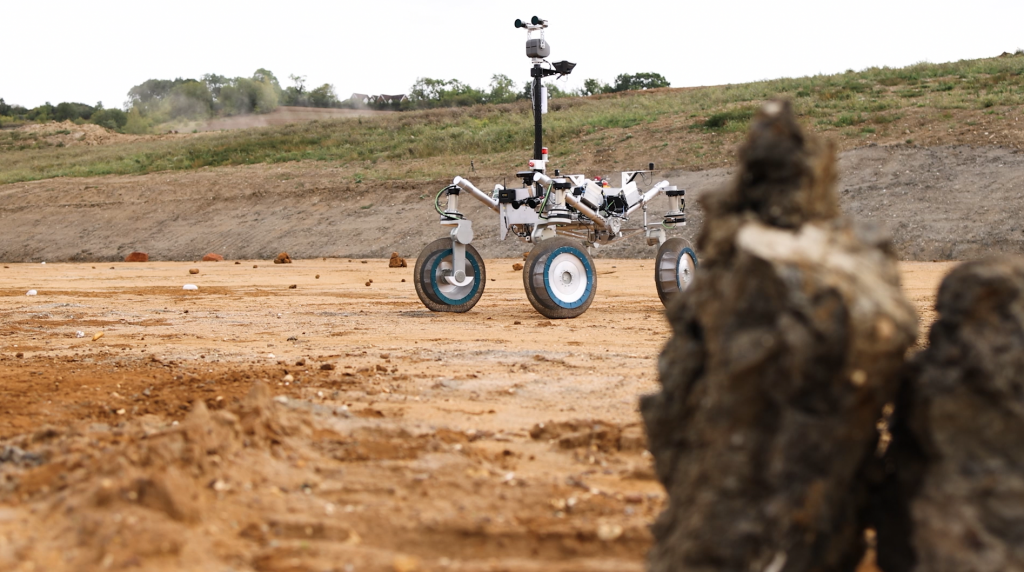It wasn’t Mars, but a quarry in the south of England where a wheeled robot put to the test its navigation skills for the first time in a real-world scenario.
Engineers from ESA and Airbus call this rover Field Trial Rover System, or FTRS. They wanted the rover to learn how to scout another planet dodging boulders, overcoming obstacles and getting close enough to interesting samples – all of it without human intervention.
Over two weeks, the shakedown gradually increased in difficulty. From flat and straight-line traverses to rocky, zig-zagging setups dotted with obstacles, the rover showed it could do its job autonomously.
The reddish terrain, although not representative of Mars in terms of soil composition, had plenty of slopes and rocks of different sizes, similar to what a rover might encounter on the martian surface.
The quarry gave engineers the flexibility to present the robot with several challenges at varying speeds – up to 6.6 cm per second – such as adding obstacles between waypoints, or altering the sequence of commands to see which course of action FTRS decided to take.
Automated navigation relied on two stereo cameras attached to the rover: one at the top of the mast and another one at deck level. At every stop, the rover used the cameras to build up a 180-degree map of the surroundings and plan its next steps.
“Since it was our first test outdoors, it was very interesting to see how the cameras and the brain of the rover perceived the changes in light,” explains Juan Manuel Delfa, ESA’s technical lead for the Sample Fetch Rover integrated breadboard.
When facing the sun, the rover can quickly calculate its position and orientation in the terrain. “This is a first for European rovers,” he adds.
The cherry on the cake was the long traverse. The rover completed a 300-metre ride across several obstacles without issue. And this distance is not trivial – 300 metres would be the maximum travel distance the Sample Fetch Rover could have completed in one martian day, also known as a ‘sol’.
“Even if the Sample Fetch Rover has been now de-scoped from the Mars Sample Return campaign, the development and validation of its technologies remain key for future ESA exploration missions with automated rovers,” says Pietro Baglioni, SFR and ExoMars Rovers team leader.
The trial involved cutting edge technology led by the UK with contributions from France, Poland, Switzerland, Canada and the USA that could one day fly to the Moon and Mars.
The rover proved that it could navigate long distances and approach designated targets with high accuracy and without humans involved. The list of key technologies tested is long: enhanced autonomous navigation, matching maps generated by the rover those generated by martian orbiters (simulated by drones in the test field), and absolute heading – the orientation of the rover – based on the position of the sun.
“This robotic trial has been the most successful one I have ever been to. We put the system into all kinds of trouble, yet the rover completed every challenge with flying colours,” says Juan Manuel.
“We are gathering precious data from the performance of the software and the working together. The long ride gives us confidence to refine an already mature technology,” says Juan Manuel.
This rover’s journey does not end here, however. Its work will continue with a more ambitious follow-on field test. The rover will also get an upgrade that enables it to perform robotic arm operations and try advanced mobility and navigation activities in the months to come.







